In case you missed it, I need your help. Please take a short, 5-minute survey by going HERE. Thanks to all 32,000 (!) of you who have already taken it!
Good morning! We are now somehow already into the month of December. (And I haven’t even started holiday shopping yet.)
Respiratory illnesses continue to increase due to colder temperatures, changes in human behavior (i.e., holidays), and viruses mutating, like Covid-19.
Here is your state of affairs.
Influenza-like illnesses: Increasing
The climate of respiratory health in the United States (coined “influenza-like illnesses” by CDC) continues to grow above the “epidemic” level threshold. It has been a slow crawl, but we expect this to shift to exponential growth soon.
The South is certainly feeling it the hardest right now, but soon this map will be all red/purple.
This increase is mostly driven by flu and RSV, while positive tests for Covid-19 remain stubbornly high.
Covid-19 continues to cause the highest percentage of deaths. While deaths are increasing, they still remain far lower than this time last year. Flu deaths are starting to show their color.
Here is your deeper dive into each virus.
Covid-19: Huge increases in Northeast and Midwest
If you missed me shouting from the social media rooftop, CDC now has a useful Covid-19 wastewater dashboard. It is absolutely beautiful.*
On a national level, Covid-19 transmission in the community has passed the summer wave peak and is approaching last winter’s peak. The Midwest and Northeast are seeing the most exponential spread.
This CDC dashboard is updated every Friday. However, we got a sneak peek at what may come as Biobot’s data update was yesterday: Explosive growth in the Midwest and Northeast.
What’s to come? All eyes are still on JN.1—a highly mutated variant. Some European countries are coming close to reaching 50% threshold of JN.1 cases. This is important because we will start seeing the epidemiological implications soon (i.e., its impact on cases and hospitalizations). Given current spread patterns, we expect JN.1 to become the next dominant variant worldwide.
The U.S. is weeks behind European countries, but models show we should expect a Covid-19 peak in late December driven by JN.1. It’s hard to know how high the peak will be given the complex immune landscape. We expect 22,000-45,000 daily Covid-19 hospitalizations at the peak this winter.
And yes, the fall 2023 vaccine works against JN.1. A pre-print showed that our first line of defense (i.e., neutralizing antibodies) increased when our cells saw the threat in a petri dish. This means the vaccine will still work against infection, but not as much as before. It is still a great tool against hospitalization and death.
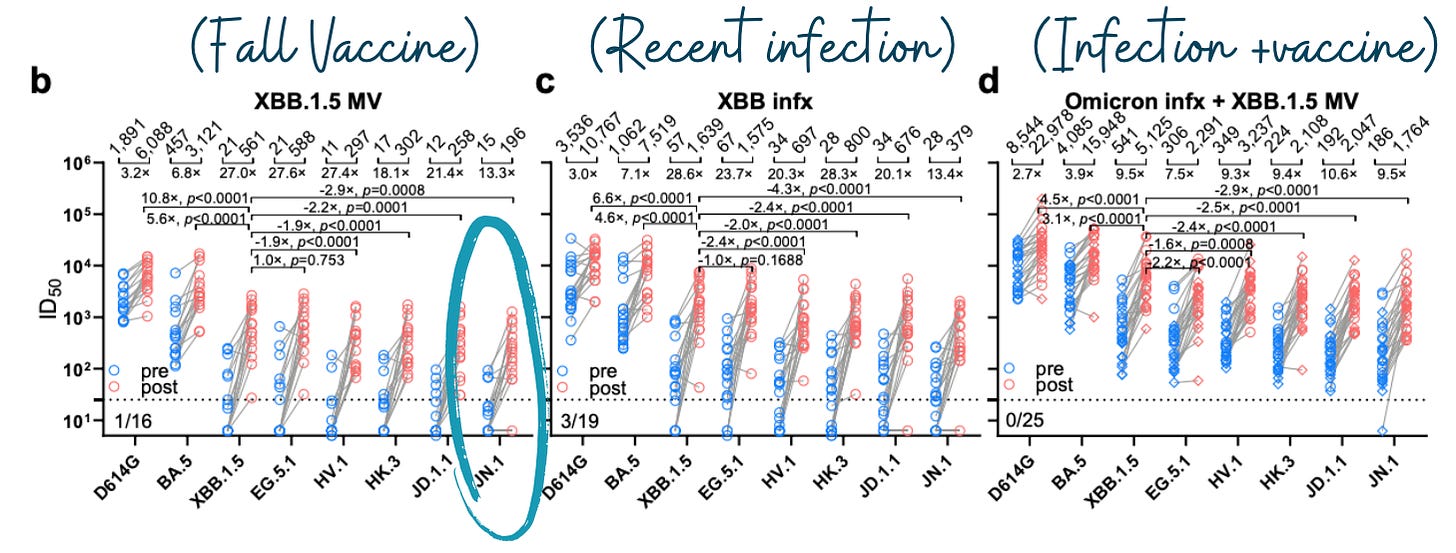
RSV: High
This season is looking very much like last year’s. RSV continues to go up and up on a national level.
Places in the South—hit first with RSV before spreading to the rest of the country— have peaked. RSV hospitalizations in Georgia, for example, are displayed below.
A few notes on the RSV vaccine:
Safety data coming. I know many older adults are waiting on the first real-world safety data, given that this new vaccine and some safety signals arose during clinical trials. Data should be coming soon. Vaccine effectiveness data is further out.
V-safe is now available for pregnant women who got the RSV vaccine this fall. Please sign up here.
Monoclonal antibodies for babies are still severely strained, although more doses are coming out soon.
Flu: Increasing
Flu infections continue to increase quickly, with hospitalizations starting to tick upward. There have been 8 pediatric deaths due to flu so far this season.
Other notable headlines
Norovirus. In case we parents didn’t have enough to manage this fall, norovirus—think stomach cramping, intense episodes of vomiting and diarrhea, and occasional fevers—has entered the chat. Levels are higher than this time last year but still far below last year’s peak. Be sure to wash those hands!
Pneumonia. Every year, we get about 2 million cases of pneumonia during the respiratory season. But there are two larger than “normal” outbreaks of childhood pneumonia in the United States, including in Ohio. CDC is keeping an eye on it, but it is not linked to China and not due to a new virus, as some on social media have feared.
Cantaloupe. Do not eat pre-cut cantaloupe at this time. Last week CDC warned clinicians of a particularly severe salmonella outbreak across 34 states.
Bottom line
We are in the dead middle of the respiratory season, and all indicators are increasing. It is still not too late to get your vaccines! And to take other protective measures to maximize fun holiday activities.
Love, YLE
*Disclosure: I am a consultant to the CDC and was part of the wastewater tiger team that overhauled the dashboard and data story.
“Your Local Epidemiologist (YLE)” is written by Dr. Katelyn Jetelina, MPH PhD—an epidemiologist, wife, and mom of two little girls. During the day, she is a senior scientific consultant to several organizations. At night, she writes this newsletter. Her main goal is to “translate” the ever-evolving public health world so that people will be well-equipped to make evidence-based decisions. This newsletter is free, thanks to the generous support of fellow YLE community members. To support this effort, subscribe below:


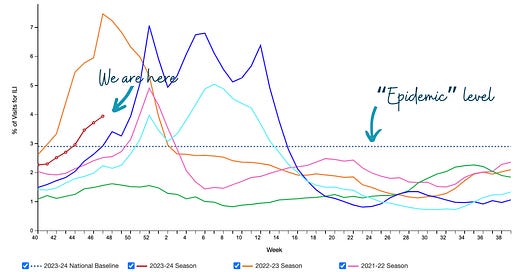



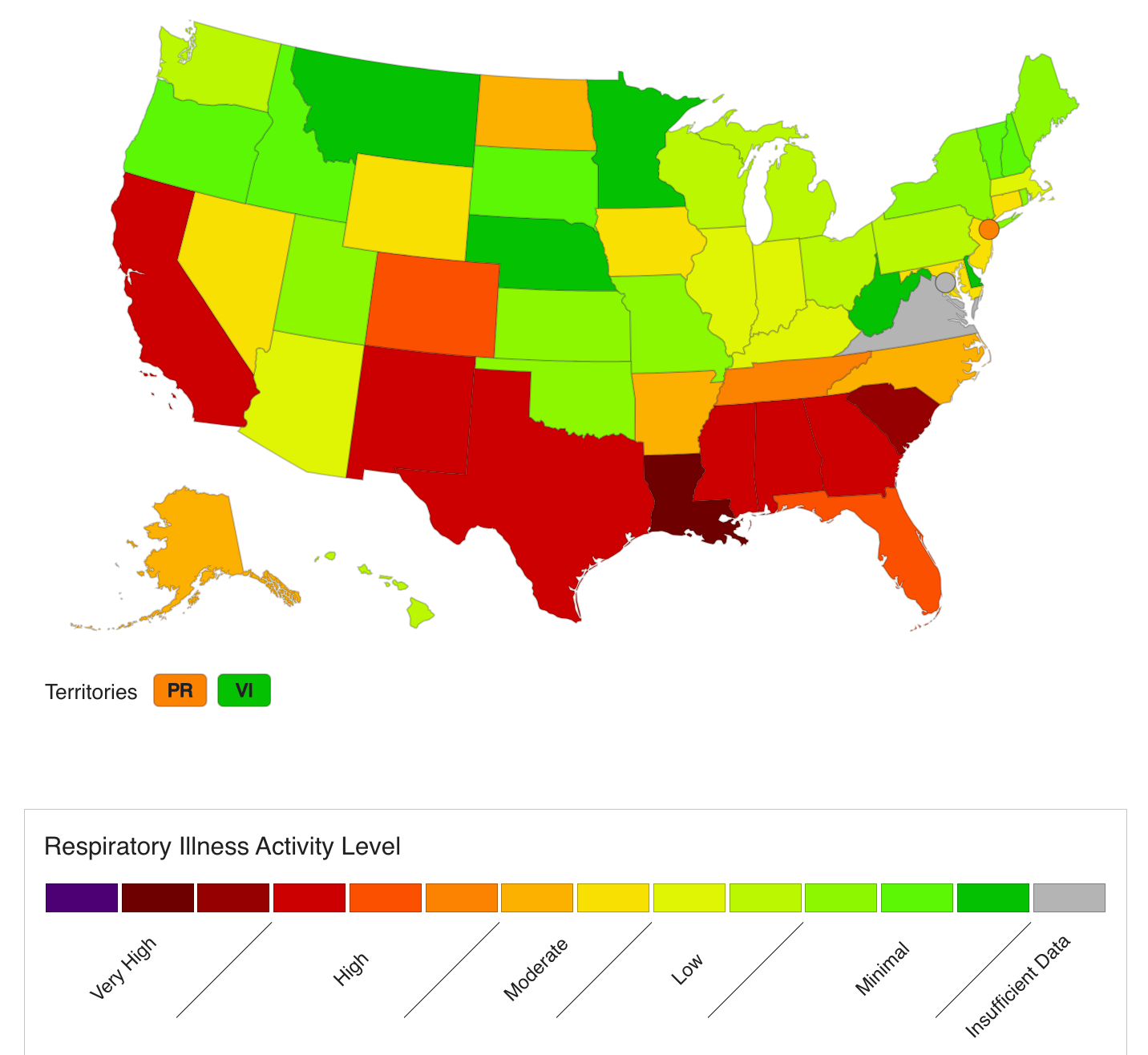
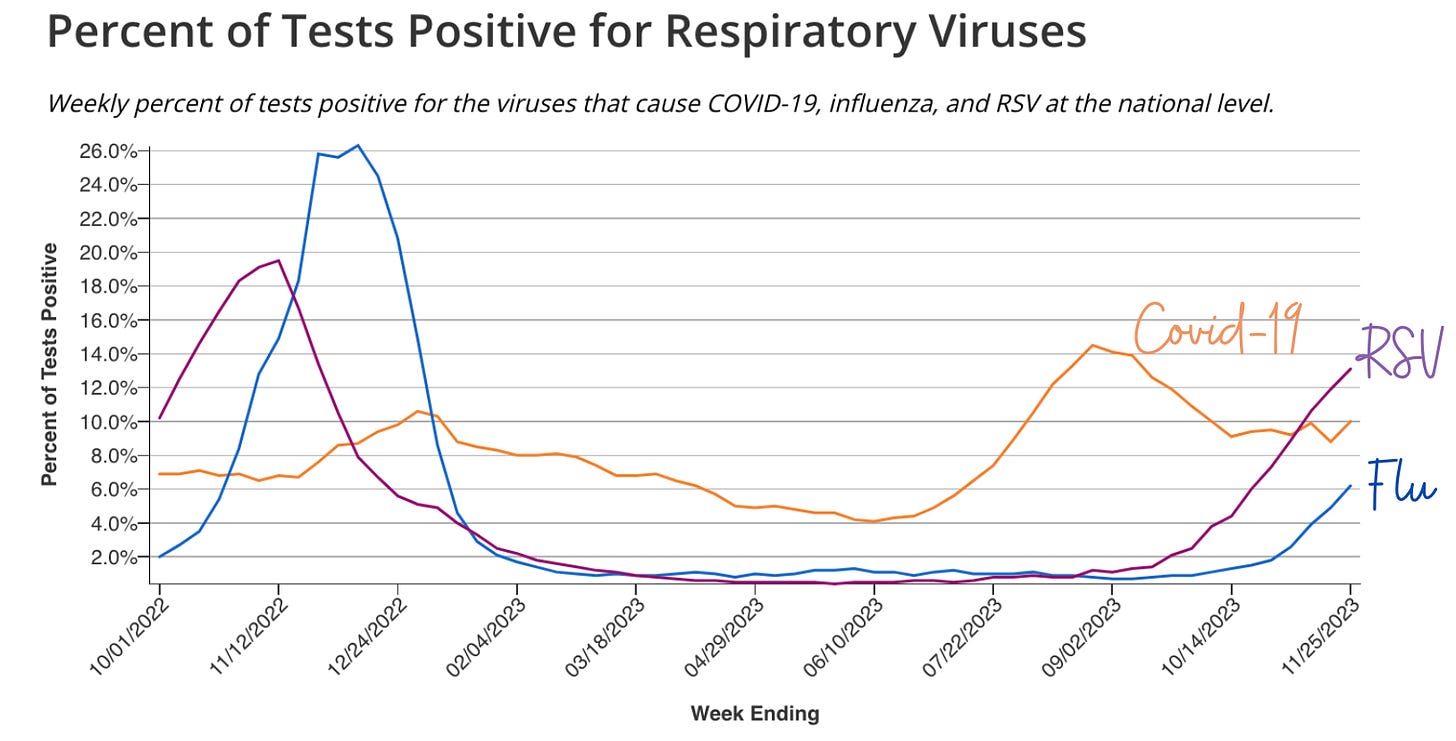



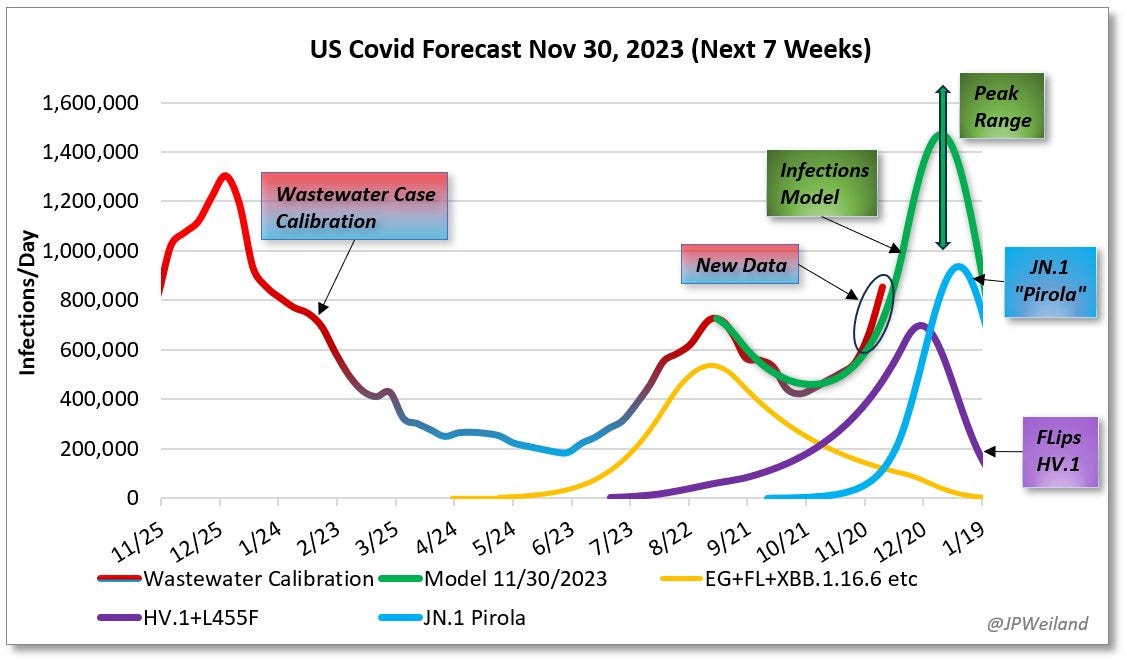
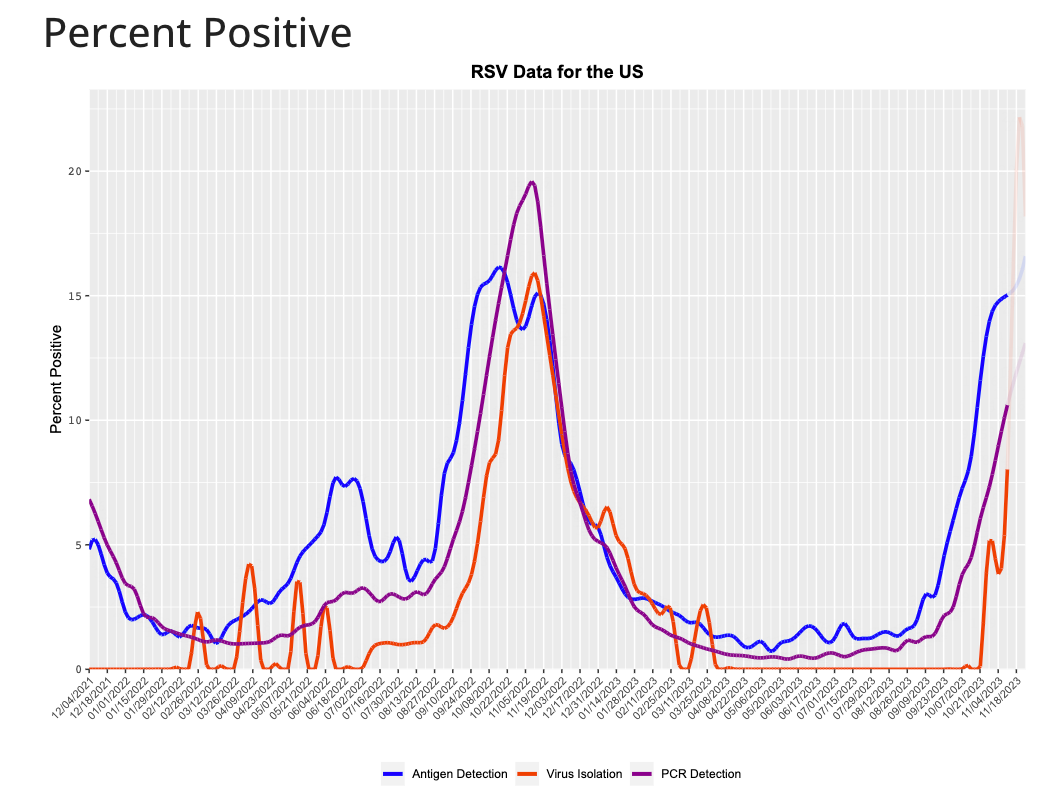
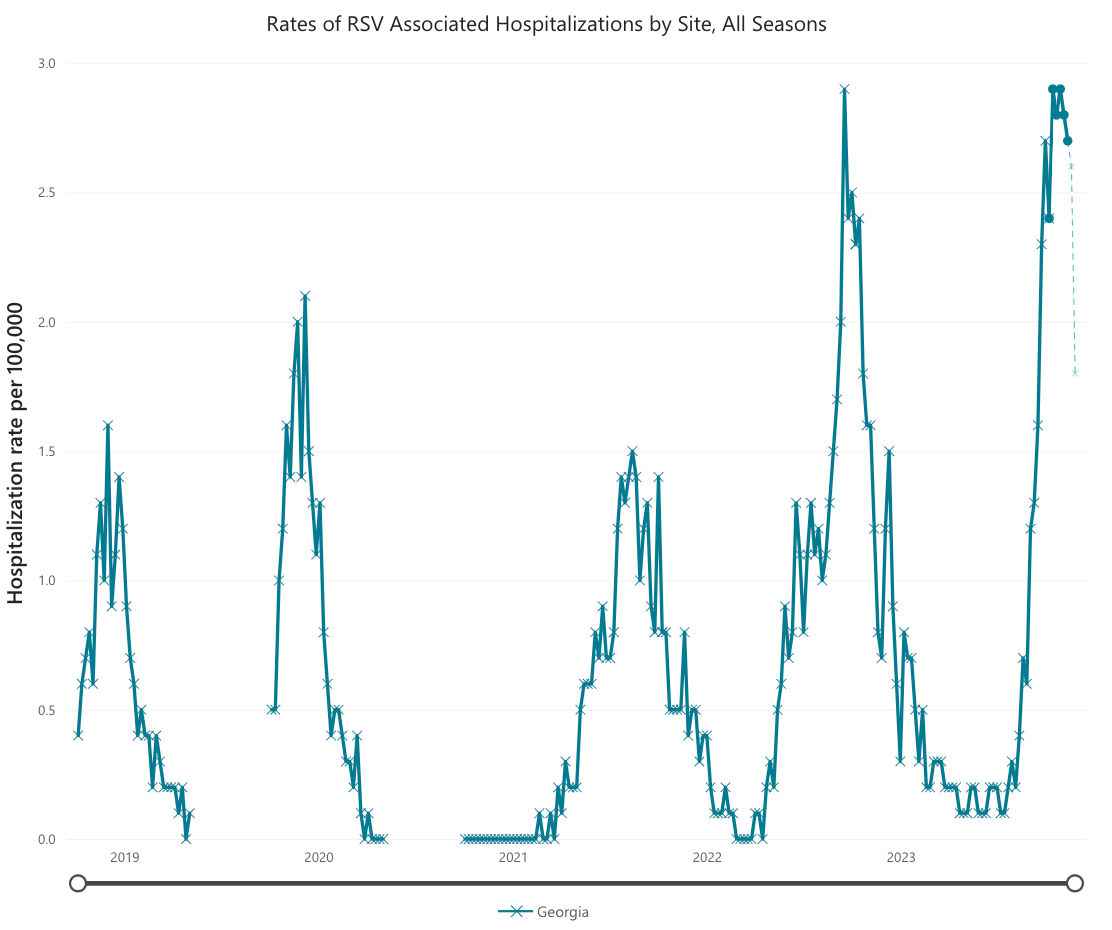
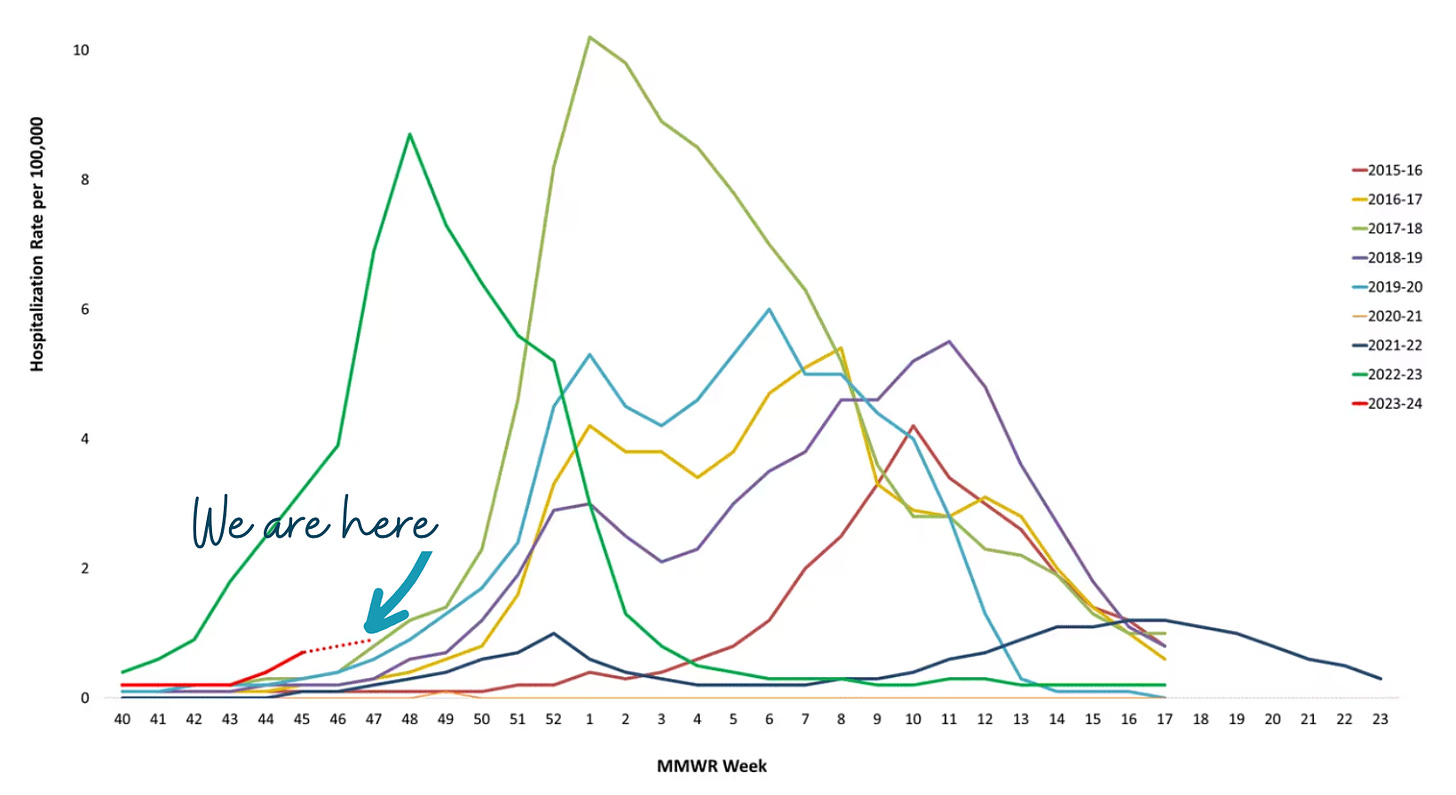

The vaccine must not work for very long against active infection. My stepmother (age 65) got the most recent vaccine mid October and tested positive Friday. Despite having had six Covid vaccines and an infection in February 2022 (which left the lasting gift of COPD), she is very ill. She was able to get Paxlovid on Saturday, but this experience has been far worse for her than Covid 2022. I understand the vaccines were not meant to prevent active infection, but being this sick despite doing all the right things is so disappointing for my parents. And, of course, my 73 year-old father has been exposed.
I hope you and your CDC Tiger Team are taking many, many victory laps for the work you did to upgrade the CDC site. Bravo and bravos to all involved!
A question if you know: it appears the NYC sites may still not be included for wastewater data, but I wasn’t able to find out whether this is because they use the commercial contractor, in which case data will begin to show in a few weeks. If that’s not the issue, do you know why and when/whether NYC data will be included?
Above all, thank you so much for this update and ALL your hard and smart work to keep us informed!